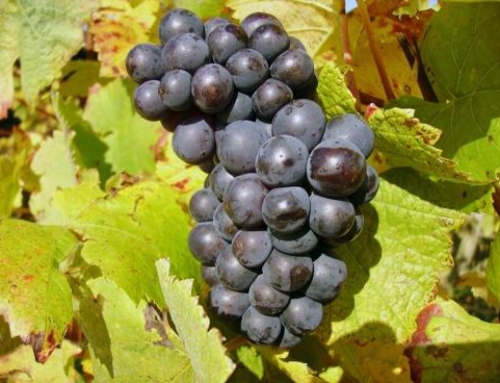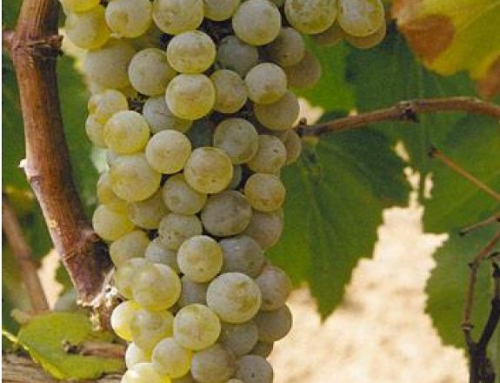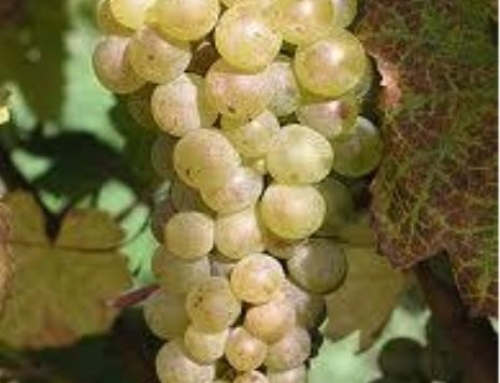Our first course when we began these 60-second Wine Courses back in November was Wine Tasting 101 – The Basics. We’ve come a long way since then – explored many different wine-growing regions and learned a few “useful only for Trivial Pursuit and annoying wine know-it-alls” facts. What someone insightfully pointed out to me at our January “Wine Down” Wednesday is that we haven’t really talked yet about how grapes become wine in the first place. A very good point and an oversight we will correct immediately…
In its most basic form, it goes something like this:
- pick a bunch of grapes (how late in the season you pick them determines how much sugar and sweetness they’ll have)
- remove the stems from the grapes
- crush the grapes so they release their juices
- put the juice (and maybe the skins and seeds, depending on what type of wine you want to make) in a container
- wait
After the grapes are crushed, yeasts (one-celled organisms that exist naturally on the grapes and/or are added by the winemaker) meet up with the sugar in the grapes’ juice and gradually convert that sugar into alcohol (the process also produces carbon dioxide, which is released into the air in the making of still wines and trapped when making sparkling wines). This is called fermentation and when it’s all over the sugar that was in the juice has been converted to alcohol. So, the sweeter and riper the grapes are when you put them in the container, the more alcohol the wine will have when the process is complete.Okay, so if it’s really that easy why don’t we all just make wine in our garage? Well, you could… but if that’s all winemakers did to their wine, we probably wouldn’t be enjoying it nearly as much as we do. Decisions, such as when to pick the grapes, the type of container used during fermentation (stainless steel or oak, for example), the size of the container and the temperature of the juice during fermentation, all make a big difference in the taste of the wine. After fermentation, winemakers also make decisions on how long to let the wine mature and what type of container to put it in while it’s maturing. Somewhere in between those last two steps, they make decisions about malolactic fermentation (see Course 8-Tidbits).Obviously, one of the most important steps in this process happens at the very beginning, when the winemaker chooses the grapes. There are white grapes (which are not really white, they’re green or yellow or gold or something along those lines – basically, they’re anything that isn’t dark red or bluish) and red grapes (which are generally called black grapes in the wine world). White grapes make white wine and black grapes make red wine… usually. White wines are made by removing the skin of the grape before fermentation. This can be done by pressing them (like when you were a kid and you shot the inside of the grape out of the skin straigh at your sister… or maybe that was just me…) and discarding the skins or by crushing them and then putting them through a machine with a big screw that breaks the skin and lets the juice drain out.Red wine is made by the black grapes fermenting with their skins and seeds. The grapes are pressed to release the juice, then left in the container with the skins while fermentation occurs. After fermentation, the juice is separated from the skins and seeds. The red color occurs when the colorless juice absorbs color from the skins of the grape. Grape skins also give the wine tannin – which impacts the way a red wine tastes. Red wines tend to be more complex, in part because of this extra element of tannin. They also tend to vary in style more because the winemaker has additional opportunities to impact the wine. For example, if the winemaker wants to make a more tannic wine (one that is firmer in the mouth and can make you pucker), he or she will leave the juice in contact with the skins for a longer time.Finally, rose or blush wines. Blush wines (which are sometimes called rose or pink wines) are made from red grapes, but the juice is left in contact with the red skins for only a short period of time – a few hours, compared to days or weeks – so it doesn’t absorb much color. They’re also much less tannic because the contact period with the skins is so short. Blush wines that call themselves “white”, ala White Zinfandel, are fairly sweet. Wines labeled “rose” can be sweet to somewhat dry, and often taste nothing like the typical White Zin. (Just a side-note, white wine can be made from red grapes if you don’t let the juice contact the skins… but that’s really only common in the making of Champagne like Blanc de Noir)And that, my friends, is it in a nutshell (or grape skin, if you prefer). Sure, there are plenty of other fine-tuning tricks winemakers can use along the way to make their unique wines – that’s what gives us so much variety in our choices – but those are the basics.





I absolutely love your blog and find a lot
of your post’s to be precisely what I’m looking for.
can you offer guest writers to write content available for you?
I wouldn’t mind writing a post or elaborating on a few of the subjects you write in relation to here. Again, awesome blog!
I would love to speak to you about writing a guest blog, as you suggest. Could you email me at info@detroitwine.org?
thanks,
alix